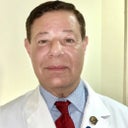I see the bump on the bridge, and how the tip seems somewhat strong. But what do you mean by shortening your columella? Your columella, what I can see of it, looks so average-y-normal to me. And a lip lift?! Please, no. Look at that profile, the last posted photo. You have a short columella, not a long one, and I agree that you'd probably hate the scar.Here's something else to make sure you look into. It seems that your bridge is strong up at the top of the nose -- in front of your eyes, or just below your eyebrows. When the nose is strong there, if a prominent bump is lowered, it's important to reduce the strength of the bridge up there at the top, or your profile would resemble the profile of a Roman statue, where the profile of the forehead slides right down onto the nose, without that little dip we like to see in front of the eyes. Search for Roman statue profile to see what I mean. Your surgeon must pay attention to that, too.









